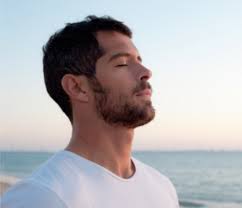- Home
- Videos
- Links
- Working with Interpreters
- Favorite Products
-
Newsletters
- December 2017
- December 2014
- June 2014
- March 2014
- December 2013
- November 2013
- October 2013 Newsletter
- July 2013 Newsletter
- June 2013 Newsletter
- March 2013
- February 2013
- January 2013
- December 2012
- November 2012
- October 2012
- September 2012
- August 2012
- July 2012
- June 2012
- May 2012
- April 2012
- March 2012
- February 2012
- January 2012
- November 2011
- October 2011
- September 2011
- August 2011
- July 2011
- March 2011
- February 2011
- January 2011
- October 2010
- September 2010
- May 2010
- April 2010
- March 2010
- September 2009
- May 2009 Remastered
- April 2009 Remastered
- February 2009 Remastered
- Healthy Body and Soul
- Upcoming Seminars
- More...
- COVID info for Medical interpreters
June 2014 Newsletter
In This Edition:
Singing and Interpreting: There are Similarities
Deterring Crime With Design
Mistakes and Learning from Them
What is the Neti Pot?
Family Law Vocabulary
Books

Singing & Interpreting
Singing is the intensification of regular speech using both tonality and rhythm. It is the act of producing musical sounds with the voice. Voices have different registrations, caused by different vibratory patterns of the vocal folds. These vibratory patterns create differences in tone, range, pitch, and color (timbre) which all compose different registrations. The vocal folds are commonly known as vocal cords or voice reeds, and are composed of mucous membranes stretched horizontally, from the back to the front of the throat across the larynx. These membranes vibrate and modulate the flow of air while it is being expelled from the lungs to the exterior of the body. Voice projection is the strength of speaking or singing where the voice is used loudly and clearly, such as an actor in a theater or an interpreter in a courtroom. Breathing techniques are essential for proper voice projection. In normal talking one may use air from the top of the lungs, while a properly projected voice uses air flowing from the expansion of the diaphragm. Well-balanced breathing is very important in maintaining vocal projection. The goal is to isolate and relax the muscles controlling the vocal folds, so that they are unimpaired by tension. The external intercostal muscles are used only to enlarge the chest cavity, while the area between the diaphragm and abdominal muscles is trained to control airflow. The way a person stands (stance) is also important. Proper stance improves balance and breathing. Here are some recommendations for singers and interpreters based the principals of voice projection and Pilates techniques:
Focus is important when performing. Attention declines after long episodes of vigilance. For lengthy performances, brief diversions from a task (breaks) can dramatically improve one’s ability to focus on that task. There are many things performers and interpreters must hear, see, perceive, remember, decide, and recall. There is also the issue of anxiety. Being rested, prepared, and organized, feeling comfortable, taking frequent breaks, repeating a focus mantra, and staying hydrated and nourished are very important when dealing with situations that demand high levels of constant attention. Remember that the brain is not wired for multi-tasking, so even though you are doing several things at once, concentrate on one, turning off all distractions and committing your attention to a single task. It is also important to remain centered. One must harmonize with the speaker but not empathize with the speaker. When the interpreter becomes emotionally involved in the dialogue, he or she has “entered the circle,” shifting from the role of “performer” to the role of “contributor.” It is important for an interpreter to know ahead of time what type of case he or she will be interpreting. Emotions and intelligence work together, and if a case deals with something that the interpreter may have difficulty handling, there should be no shame or reproof for turning it down. When not at work, it is important to remain relaxed, to participate in creative tasks and to serve and help others. Socializing is vital. Find a group that allows you to talk about difficult work-situations, but also meet with friends and family and focus on strengthening bonds and forging new relationships. Maintaining a sense of community allows people to understand that isolated acts are significant and that individual performances do affect the greater scheme of things. 
Family Law Vocabulary
To protect the welfare is to: Proteger el bienestar/ salvaguardar /amparar/defender/resguardar/velar por Legal definitions: La consanguinidad está determinada por la vinculación sanguínea. La Afinidad se determina por la vinculación matrimonial. Líneas de parentesco, hay tres tipos: - Consanguinidad. Vínculos que existen entre los descendientes y ascendientes de un progenitor común (ejem. bisabuelos, abuelos, padres, hijos, nietos, bisnietos, etc.) - Afinidad. Vínculos que se forman a través del matrimonio, que cada cónyuge contrae con los parientes consanguíneos del otro (p.ejem., suegros, yernos y nueras, cuñados, etc.). Por lo general, los parientes de cada cónyuge no adquieren parentesco legal con los parientes del otro (p.ejem., legalmente los consuegros y los concuños no son parientes, aunque se traten como familia). - Adopción. Vínculo entre el adoptado y los padres adoptivos y sus parientes consanguíneos. Immediate family refers to a person’s parents, spouse, children, and siblings and will also include the parent’s spouse. Usually step children and adopted children and their spouses are included under the purview of immediate family. An example of a Missouri Statute defining immediate family is the Missouri Code of State Regulations 19 CSR 15-7.021 (18) (H). It defines immediate family as follows: An immediate family member is defined as a parent; sibling; child by blood, adoption, or marriage; spouse; grandparent or grandchild. |

Deterring Crime With Design
What if crime could be deterred by designing interiors and landscapes in a specific way? Shoplifting and drug dealing could be diminished by using sound-magnification materials and panels with openings so everyone could see what's happening on the other side. Tall hedges could be replaced by low plant and flower beds to allow visibility from all angles. Dark corners, created by two walls placed at a 90 degree angle could be eliminated by installing a third wall that truncates the corner completely. Would you sleep on a park bench with the armrest in the center? Wouldn't you feel more relaxed at an ATM if every time someone approached, you heard footsteps? Well, there are designers, law enforcement agents, psychologists, and more professionals that are dedicated to these specific projects. Some countries, like the San Diego Police Department in the USA, have special teams that support neighborhood policing and practice the philosophy of deterring crime through design. In Sidney, Australia "Designing Out Crime" has research, tested, and created solutions to many old problems. Pickpocketing occurs everywhere, especially now with the price of certain smartphones, but "Design Against Crime" of London teaches citizens a few perpetrator techniques. If you are interested in knowing a little more about environmentally responsible design to deter crime, click here to hear a recording of the 2010 conference. Mistakes
The first thing to understand about mistakes is that everybody makes them. Mistakes allow us to grow. But not everybody learns from their mistakes. Many people make mistakes but do not realize or believe they've done anything wrong. This might be because in life we perform based on lessons and values acquired over the years. We create a world of truths and certainties that give us confidence and security. It is difficult to come to the realization that we are or were incorrect. It's curious but true; it is not what we do wrong that makes us feel humiliated, inadequate, or defeated. We only feel these terrible things when we realize we made a mistake. Many times it is difficult to deal with these emotions, but these realizations are what allow us to improve and grow into mature, humble, open-minded individuals. In public speaking and in interpreting there are many types of mistakes that a professional may commit.Interpreters and public speakers know that some mistakes are less critical than others. In the interpreting field it is not a critical mistake, for example, to use the word small instead of the word little. However, mistakes should not be ignored. They should be analyzed and protocol should be followed, and corrections should be made as soon as possible. It is important to pay attention and to be kind to oneself and to others. 
The Neti Pot
Neti pots are little teapots with long spouts and no handles that are used for nasal washing with saline solution or distilled water and sea salt. Neti pots and nasal washes have become popular as a treatment for congested sinuses, colds and allergies, and for moistening nasal passages exposed to dry indoor air. The US Food and Drug Administration (FDA) informs consumers, manufacturers and health care professionals about safe practices for using all nasal rinsing devices including bulb syringes, squeeze bottles, and battery-operated pulsed water devices. Many users prefer the ceramic neti pot because it is manual, does not produce water pressure, and does not contain plastic. The neti pot should be used with warm water (boiled or distilled) and sea salt. You may have to test different water temperatures and amounts of salt several times until you find a comfortable combination. When using the neti pot, breathe through your mouth and don't inhale the water; simply allow it to pour into one nostril naturally and to come out the other by gravity. One pot holds enough water or saline solution to wash both nostrils and passages, but blow your nose before switching sides. Make sure you wash your neti pot after and before each use. Never save leftover water and never use tap water for your nasal washes. The neti pot is a great solution for congestion and allergies but make sure you use it properly because incorrect use may cause serious infections. If you have time, here are a few good books to read about the Nuremberg Trials: "Anatomy of the Nuremberg Trials-A Personal Memoir" by Telford Taylor and "Nuremberg Diary" by G.M. Gilbert
|






